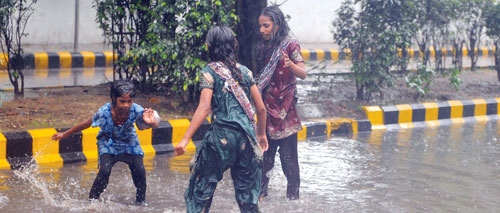Monsoons after monsoons, Delhiites continue to consume street food at the cost of their own health and wait for the colder days, when the bacteria and virus finally freeze to death.

Monsoon rains are usuallyromanticised and glorified in Indian society and culture. After months ofsearing heat and dust storms, the North Indian plains desperately look forwardto the thunderstorms and rains that monsoon brings with it.
However, the rains also bringdisease, leaking sewers, and mosquito-infestation with them. While spicydumplings and fried junk food are part and parcel of the monsoon streetcuisine, a quick jaunt to the nearest market reveals a sad state of affairs. Tograb a bite at the famous Delhi street food stalls isn't exactly a walk in thepark. Instead, one will have to wade across puddles of water, jump across heapsof garbage and ensure that there is enough mosquito-repellant lest thebloodsuckers bite one's arms and fingers as they place the luscious golgappa (alocal delicacy) in their mouth.
Certainly, Delhi does not rank asa world class city when it comes to hygiene and civic sense. The city also faresterribly when it comes to handling sudden downpours and cloudbursts, which areall too common in this part of the country. Just a drizzle is enough to bringtraffic to a standstill and the crowded markets quickly turn into open sewersand drains where one cannot possibly walk without holding ones breath to avoidthe stench.
Right from the famed PVR Priya inVasant Vihar to the Community Centre in New Friends Colony, people flock at thefood stalls without paying much attention to the puddles of fresh rainwater andsludge coagulated with stale urine and spit. Vendors and shopkeepers remain nonchalantjust like their customers. Says Bina Roy “It is dirty but what can we do at theend of a tiring day? MCD (Municipal Corporation of Delhi) is responsible formaking sure that the rain water drains are functioning. We don’t have muchchoice but to ignore the filth and grab some junk food”.
The scene isn’t different at theupscale Khan Market. Shoppers and club-goers hop across stinking puddles, a littlelocal game they seem to have invented, to be played after a satisfying bite ordrink at their favorite haunt. What seems strange is that nobody seems to caremuch about the unhygienic conditions in which they live. The insouciance amongvendors, customers, and officials is shared and the status quo remains thesame.